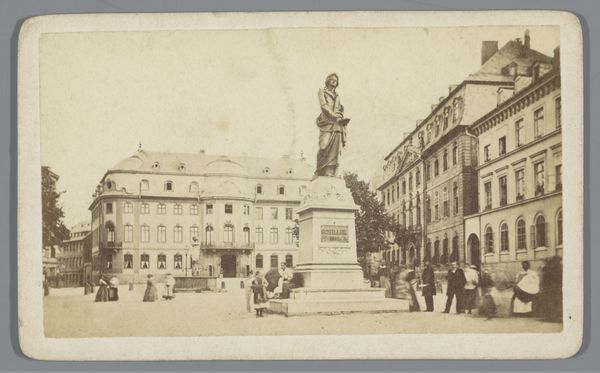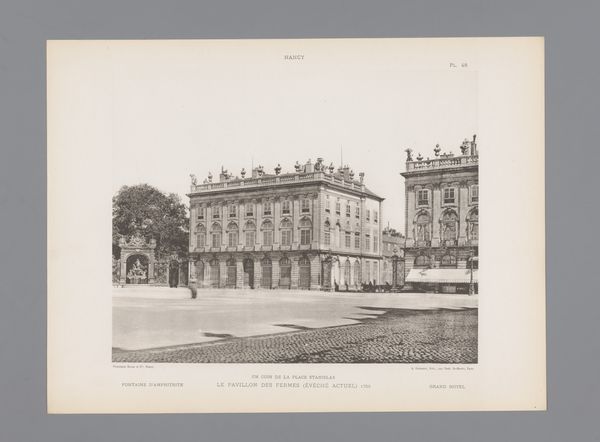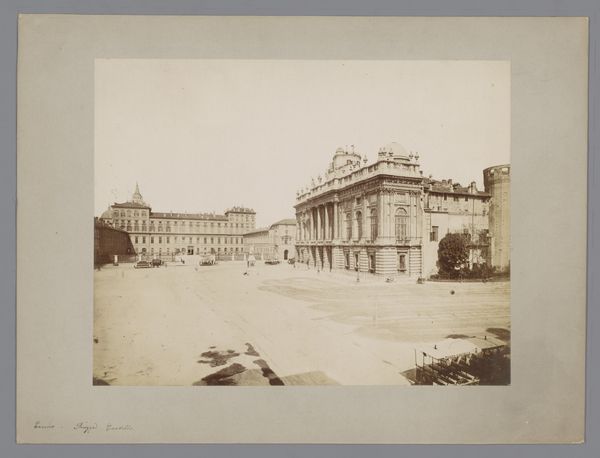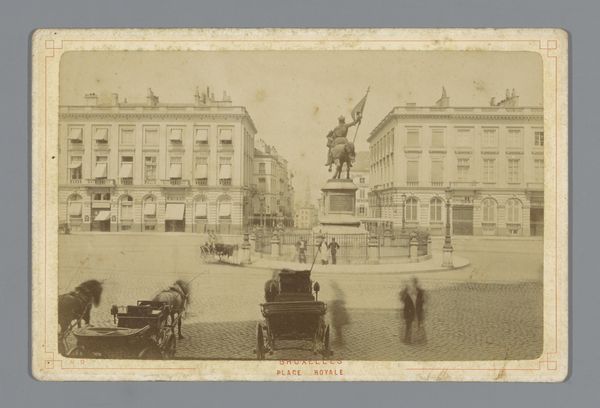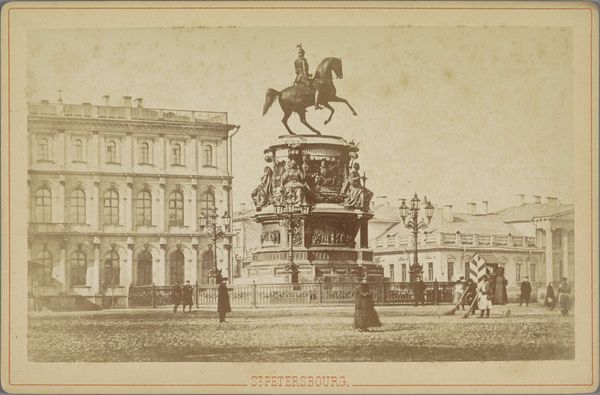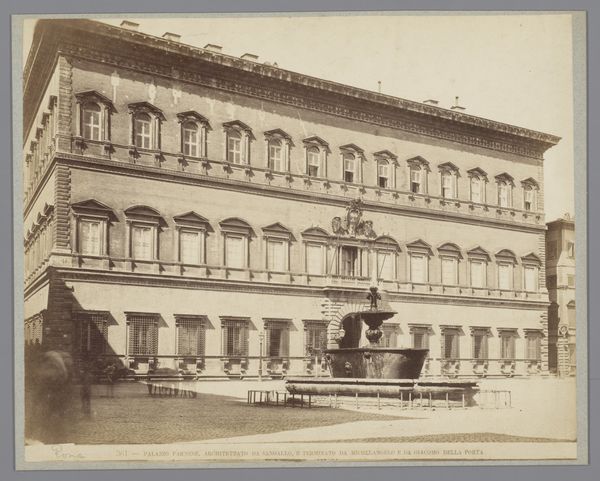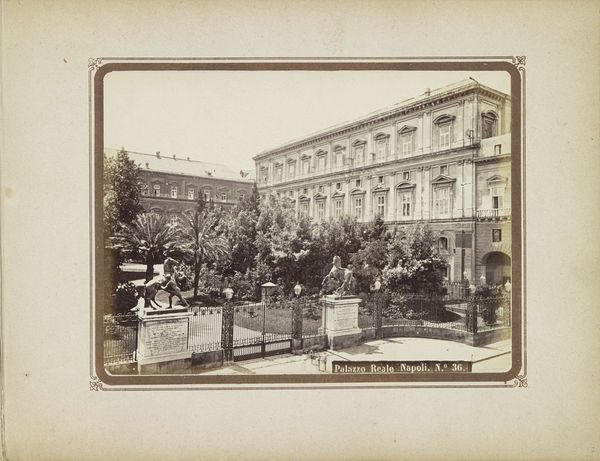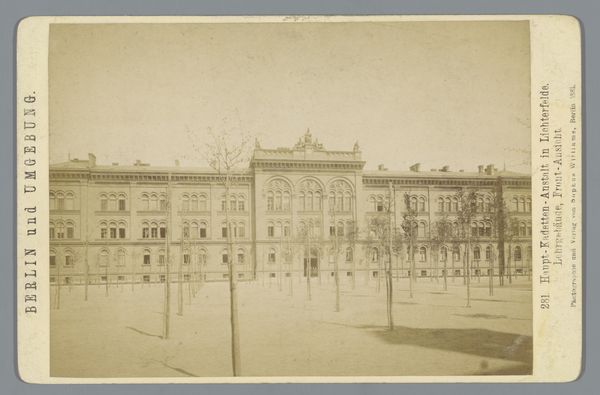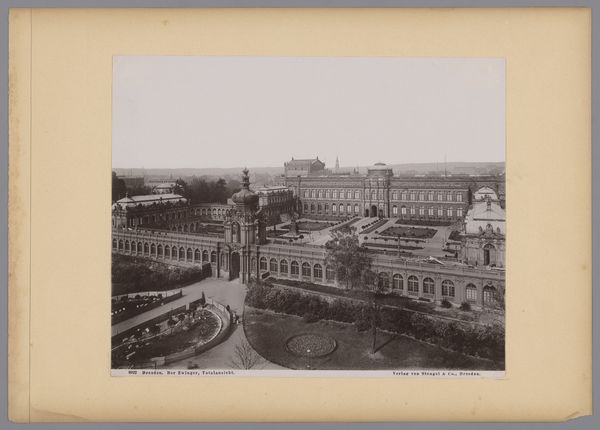
Brussel. Place Royale met het standbeeld van Godfried van Bouillon 1880 - 1930
0:00
0:00
anonymous
Rijksmuseum
print, photography, gelatin-silver-print
# print
#
neo-impressionism
#
photography
#
gelatin-silver-print
#
cityscape
#
realism
Dimensions: height 200 mm, width 250 mm, height 250 mm, width 300 mm
Copyright: Rijks Museum: Open Domain
Curator: This gelatin-silver print, simply titled "Brussel. Place Royale met het standbeeld van Godfried van Bouillon," captures a slice of life in Brussels between 1880 and 1930. Editor: It's evocative! The stark contrast emphasizes the square's geometric precision against the almost ghostly figures. The statue and surrounding buildings loom, projecting a feeling of subdued grandeur. Curator: Indeed, it’s interesting how the anonymous photographer framed the statue of Godfrey of Bouillon, a Crusader hero, right in the heart of Place Royale. It becomes a powerful symbol of Brussels’s historical identity. Editor: I see the heroic, equestrian statue but the streetcars feel equally prominent. I am struck by the mix of old and new in the photograph. The scene documents a changing urban landscape, right? A very conscious positioning, both celebrating the past and acknowledging modernity. Curator: Absolutely. The horse-drawn carriages, although perhaps fading from the scene, echo the rider on the statue, whereas those early streetcars show the march of technology that transforms not only mobility, but perception and access. And it's crucial to note that the Place Royale itself was deliberately designed to showcase power. Editor: Right, an act of urban planning to present state authority. Is that a statement, I wonder, considering photography's power to democratize representation. Does this photograph present or critique that idea? Curator: That's the intriguing tension! The photograph memorializes the urban landscape while implying the changing role of power through technology and progress. Godfrey still stands, a guardian spirit amidst social progress. Editor: Looking closer, I noticed how light refracts from the cobblestone of the square creating an effect almost like Impressionism, which is fitting given the period. It subtly challenges that static monumentality. Curator: An interesting perspective. These prints often act as records, offering a window into the everyday existence of citizens and city life. It encourages us to question which facets of this historical period were consciously preserved. Editor: Yes. The blend of deliberate staging and candid realism truly encapsulates that feeling of societal transition. It’s like holding a moment between eras. Curator: It's a perfect capture of how a city holds onto its memories while moving toward an uncertain future.
Comments
No comments
Be the first to comment and join the conversation on the ultimate creative platform.

